New Delhi, July 12: Lightning strikes are a common phenomenon in India. It is a natural occurrence when an electrical discharge is caused by imbalances between storm clouds and the ground, or within the clouds themselves. Most lightning occurs within the clouds. Basically, lightning occurs when the negative charges (electrons) in the bottom of the cloud are attracted to the positive charges (protons) in the ground, causing a surreal effect. Lightning Strikes Amber Fort and Other Parts of Rajasthan, 18 Killed, Several Injured.
In order to be safe during lightning strikes, people should check the weather forecast before participating in outdoor activities. If the forecast calls for thunderstorms, postpone your trip or activity. To avoid the exposure of lightning while outdoors, some tips to keep safe and reduce the risk are as follows:
If You are Outdoor During Lightning; Here are the Dos and Don’ts
- Check the weather forecast before participating in outdoor activities. If the forecast calls for thunderstorms, postpone your trip or activity.
- When thunder roars, go indoors – means go to a safe shelter immediately to avoid metal structures and constructions with metal sheeting. Safe shelters include pukka homes, pukka buildings, or hard top vehicles with the windows rolled up.
- Remember the 30/30 Lightning Safety Rule: Go indoors if, after seeing lightning, you cannot count to 30 before hearing thunder. Stay indoors for 30 minutes after hearing the last clap of thunder.
- If you are caught outside with no safe shelter nearby, immediately get off elevated areas such as hills, mountain ridges, or peaks. Never use a cliff or rocky overhang for shelter.
- Immediately get out of and away from ponds, lakes, and other bodies of water. If working in an outdoor watery area (e.g. paddy transplantation), immediately move out of the field to a dry area (at least to the field border).
- Ideally, find a shelter in a low-lying area and make sure that the spot chosen is not likely to flood.
- Do not lie flat on the ground, as this will make a bigger target.
- If no shelter is available, immediately get into the lightning crouch: (Squat or sit in a tight ball, arms wrapped around your legs. Keep your feet together (touching), head lowered, ears covered, and eyes closed. This makes you as small a target as possible.
If at home or Indoor, shelters like your homes, offices, shopping centers, etc. considered safe during a lightning storm, a person may still be at risk.
Here are some tips to keep safe and reduce the risk are as follows:
Even though shelters like your homes, offices, shopping centers, etc. considered as safe during a lightning storm, a person may still be at risk. Here are some tips to keep safe and reduce the risk are as follows:
- Look for darkening skies and increased wind.
- If you hear thunder, you are close enough to be struck by lightning. Remember the 30/30 Lightning Safety Rule: Go indoors if, after seeing lightning, you cannot count to 30 before hearing thunder.
- Stay indoors for 30 minutes after hearing the last clap of thunder.
- Keep monitoring local media for updates and warning instructions by various modes of communication. Stay indoors and avoid travel if possible.
- Close windows and doors, close window blinds, shades or curtains. Secure objects outside your home (e.g. furniture, bins, etc.). Remove tree timber or any other debris that may cause a flying accident.
- Ensure that children and pet animals are inside.
- Unplug electrical/ electronic appliances like computers, laptops, game systems, washers, dryers, stoves, refrigerators, Television, air conditioners or anything connected to an electrical outlet, as the main power supply which may conduct a power surge during a lightning storm.
- Avoid taking a bath or a shower, wash dishes, or have any other contact with water and stay away from running water. This is because lightning can travel through a building’s plumbing and metal pipes.
- Do not use electric/electronic appliances including corded phones and any metal wires or bars in concrete walls or flooring. However, it is safe to use cordless or cellular phones during a storm.
- Keep away from doors, windows, porches, and concrete floors, fireplaces, stoves, bathtubs, or any other electrical conductors during a thunderstorm. • Avoid open structures/spaces such as porches, gazebos, sports arenas (such as golf courses, parks, and playgrounds), ponds, lakes, swimming pools, and beaches.
- Do not lie on concrete floors and do not lean against concrete walls.
Lightning strikes are have killed as many as 28 people in Rajasthan and Uttar Pradesh as parts of North India received rain on Sunday. A majority of deaths happened in Rajasthan where about 20 people died after being struck by lightning near a watchtower at the 12th century Amber Fort. Prime Minister Narendra Modi announced an ex-gratia for the families of those who were killed in lightning strikes in Rajasthan, Madhya Pradesh and Uttar Pradesh during heavy rainfall in these states.
(The above story first appeared on LatestLY on Jul 12, 2021 02:34 PM IST. For more news and updates on politics, world, sports, entertainment and lifestyle, log on to our website latestly.com).













 Quickly
Quickly








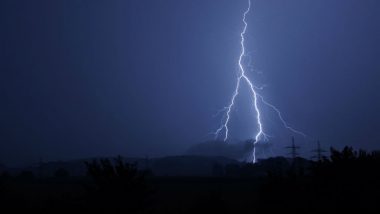
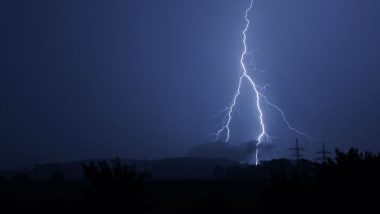
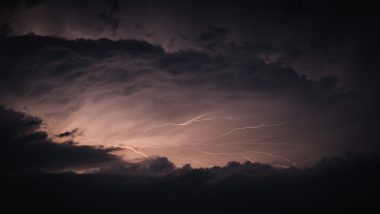
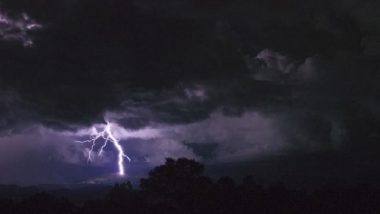
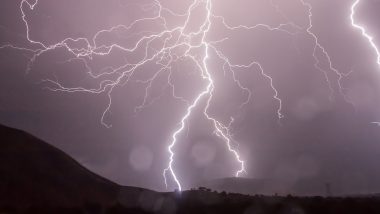
 GT
GT







